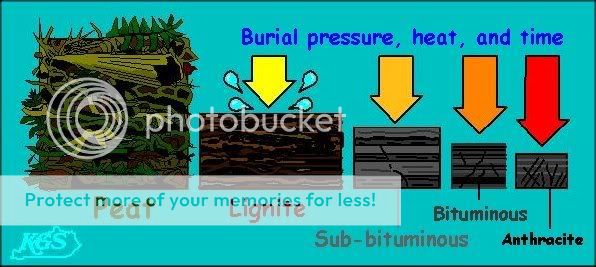Many geologists have referred to the AA Highway as a “treasure
trove” and “an outdoor classroom” in which to study diverse and
significant features such faults, systemic rock boundaries, fossils
and ancient river markers.
Like modern-day sleuths, geologists interpret the clues they
find preserved in the rocks. These clues are of two main kinds: the
types of fossils contained in the rocks and the properties of the
rocks themselves. As geologists' knowledge of the Earth increases,
the record of its history has become clearer and more
meaningful.
Buckle your seat belts and head back in time and look for the
clues as you head down the AA from it’s intersection with US 23 in
Greenup County. Each cache in this series will stop at a unique
geologic formation and will seek answers to some basic questions
that should be easy to calculate.Sizeable pull off areas are
available at each stop in the series. Geology students frequent the
locations routinely. The calculations can be made from your car
even, making it handicap accessible!
Moving backward in time from the Great Ice Age, to the Age of
Dinosaurs, and then to the Coal Age, the contrast in the
distribution of land and water from the ancient past to the present
becomes more dramatic. The Carboniferous Period is a major division
of the geologic timescale that was part of the Paleozoic Era. It
spanned the period from 360 million years ago to 286 million years
ago, about 70 million years before the dinosaurs. The bottom half
of this period is known as the Mississippian Period, the top half
as the Pennsylvanian Period. Coal formed as the Mississippian
Period ended and the Pennsylvanian Period started. The two
sub-periods were adopted to distinguish the coal-bearing layers of
the Pennsylvanian Rock from the mostly limestone Mississippian.

Mississippian to Pennsylvanian Period transition represents an
environmental change from a near shore marine environment in
Kentucky to a terrestrial swamp setting. As with most older
geologic periods, the rock beds that define the period's start and
end are well identified. In the Mississippian period, the
submersion on several occasions of the interior of North America
under shallow seas resulted in the formation of limestone, shale,
and sandstone. In the Appalachian region great deposits of
sandstone and shale were laid down by the erosion products from the
eastern coastal highlands. Carboniferous rock formations often
occur in patterns of stripes with shale and coal seams alternating,
indicating the cyclic flooding and drying of an area. Near the end
of the Mississippian, uplift and erosion of the continents
occurred, causing an increase in the number of floodplains and
deltas present. The uplift of the continents caused a transition to
a more terrestrial environment during the Pennsylvanian period.

Swamp forests as well as terrestrial habitats became common and
widespread. The coal we find today formed from generations of
plants that died in ancient tropical swamps and accumulated on the
swamp bottoms. The plant material first formed a compact organic
material called peat. As layers of sediment gradually accumulated
over the peat, the pressure and heat exerted by the thickening
layers gradually drove out the moisture and increased the carbon
content of the peat, forming coal. Most of our coal was formed
about 300 million years ago during this carboniferous period when
much of the earth was covered by steamy swamps. A diagram provided
here illustrates the ransition from plant debris to coal.

The close of the Pennsylvanian period was marked by the
beginning of profound changes, changes in geography and climate,
and therefore changes in the amount and habitat of life, and in the
sites of erosion and sedimentation. One of the great changes of
this time was the beginning of the development of the Appalachian
Mountain system. The Carboniferous Period was the beginning of a
geologic time that started earth’s foundations and life forms in
the direction of where they are today.
The task of the first AA Earth Cache is to go look for the
Carboniferous Period Mississippian and Pennsylvania Rock. Your
travels will take you to Mile Marker 4.6 to 4.8 to study a unique
road cut exposing a dramatic differentiation of the two types of
rock from the period. Remember, you are looking at nearly 400
million years worth of geologic time here.

The coordinates for the cache will take you to the intersection
of the AA Highway and Howland Hill Road. This is the beginning
location of the rock formation on the northeast side of the road.
Stop.
1.Take an elevation reading for this location and write it
down.
2.Mark a point of the present location on your GPS.
3.Continue on to where you identify where ancient rivers have cut
through the rock.
4.Calculate how far down the hill from the marked point at the
beginning of the formation you have traveled to reach the river
erosion.
5.Continue to where the period rock boundary is clearly identified.
The older Mississippian Rock is underneath the newer Pennsylvania
Rock. The Mississippian Rock is comprised of sandstone and
siltstone. Pennsylvania Rock is comprised of Shale, flint clay and
coal.
6.Take a second elevation reading at the beginning of the boundary
rock exposure.
7.Calculate the difference in elevation from the beginning of rock
formation to here.
8.Estimate how much rock is exposed from the Mississippian Period
and the Pennsylvania Period here. The exposure of rock from bottom
to top here is 225’.
Email the correct answers below and post a picture of the
distinct boundary of the Mississippian and Pennsylvanian Period
Rock here with your log. Then you too will be a geocaching geologic
sleuth!
1. The distance from the beginning of the formation to the ancient
river erosion is:
A/ Between a tenth and two tenths of a mile
B/ Between two tenths and three tenths of a mile
C/ Between three tenths and four tenths of a mile
2. The difference in elevation from the beginning of the formation
to the period boundary rock is:
A/ 20-40 feet
B/ 40-60 feet
C/ 60-80 feet
3. The Period Rock Exposed is estimated at:
A/ 40 feet of Mississippian Rock and 185 feet of Pennsylvanian
Rock
B/ 60 feet of Mississippian Rock and 165 feet of Pennsylvanian
Rock
C/ 80 feet of Mississippian Rock and 145 feet of Pennsylvanian
Rock
Geologists working in the many fields of research continually
add to the fund of information about the Earth -its origins, its
mineral resources, and the processes that change its land
features.Studies of the physical and chemical properties of rocks
provide the data which, when fitted together, lead to a better
understanding of the successive changes that have occurred on the
Earth. These concepts are "incomplete" because much information has
yet to be discovered. But as geologists' knowledge of the Earth
increases, the record of its history has become clearer and more
meaningful.
Now buckle up again and get ready for another new geologic
adventure along the AA Highway- Kentucky’s gateway to the past.
